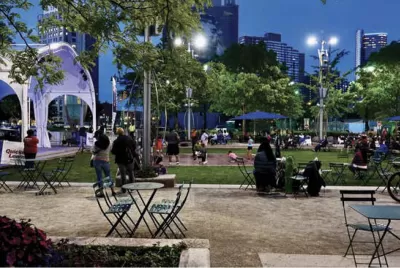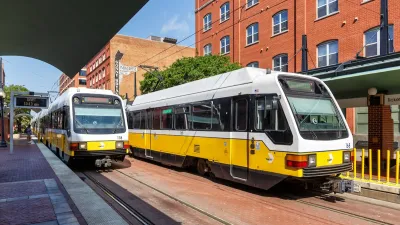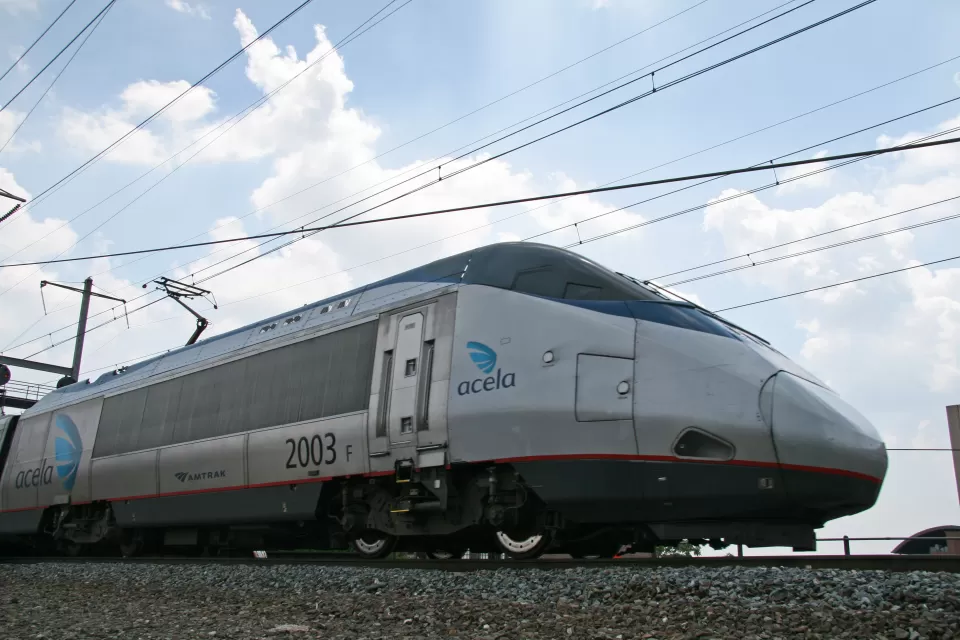Cities have more experience, and examples, than they might realize when it comes to reinventing systems of investment and governance to recover from the economic ravages of the COVID-19 pandemic.

Rip Rapson, president and CEO of the Kresge Foundation, writes for Bloomberg CityLab on how Detroit's recent experience with municipal bankruptcy provides lessons that can inform a radical new model of economic recovery—a mode necessitated by the scale of the pandemic crisis and the economic stagnation and racial injustice that existed before the novel coronavirus.
Rapson recalls the "Build Back better" mantra of the economic recovery plan proposed by the Biden administration during the presidential campaign and embodied in the American Rescue Plan, approved earlier this year, and the American Jobs Plan, proposed more recently but still a long way away from approval.
The more expansive view of infrastructure proposed by the American Jobs Plan is central to Rapson's argument about the examples available from Detroit's experience in recovering from municipal bankruptcy.
As my work at the Detroit-based Kresge Foundation has shown me, human services, rather than being viewed simply as platforms for crisis management, must be understood as an integrated suite of supports capable of breaking down barriers that inhibit family economic productivity in favor of creating pathways to economic mobility.
The federal government cannot masterplan this infrastructure of economic mobility, nor should cities be expected to absorb massive volumes of funding in heavily prescribed ways. Cities must have creative latitude to customize strategies to residents’ needs and build partnerships across the public, private, nonprofit and philanthropic sectors. Those relationships can multiply federal resources, unlock new forms of innovation, and engage community residents in the complexities of local problem-solving.
Cities are already well underway with that kind of reinvention, according to Rapson—as exemplified by the systems established in cities to set up testing and vaccination capacity during the pandemic. Moreover, cities can look to Detroit's example from before the pandemic. According to Rapson, "rather than ushering in doom, Detroit’s bankruptcy catapulted the city into reimagination, recalibration and renewal." Numerous Detroit-specific examples of what it means to Build Back Better, and how cities are positioned to start doing just that, can be found in the source article at the link below.
FULL STORY: Detroit Showed What ‘Build Back Better’ Can Look Like

Study: Maui’s Plan to Convert Vacation Rentals to Long-Term Housing Could Cause Nearly $1 Billion Economic Loss
The plan would reduce visitor accommodation by 25,% resulting in 1,900 jobs lost.

North Texas Transit Leaders Tout Benefits of TOD for Growing Region
At a summit focused on transit-oriented development, policymakers discussed how North Texas’ expanded light rail system can serve as a tool for economic growth.

Why Should We Subsidize Public Transportation?
Many public transit agencies face financial stress due to rising costs, declining fare revenue, and declining subsidies. Transit advocates must provide a strong business case for increasing public transit funding.

How to Make US Trains Faster
Changes to boarding platforms and a switch to electric trains could improve U.S. passenger rail service without the added cost of high-speed rail.

Columbia’s Revitalized ‘Loop’ Is a Hub for Local Entrepreneurs
A focus on small businesses is helping a commercial corridor in Columbia, Missouri thrive.

Invasive Insect Threatens Minnesota’s Ash Forests
The Emerald Ash Borer is a rapidly spreading invasive pest threatening Minnesota’s ash trees, and homeowners are encouraged to plant diverse replacement species, avoid moving ash firewood, and monitor for signs of infestation.
Urban Design for Planners 1: Software Tools
This six-course series explores essential urban design concepts using open source software and equips planners with the tools they need to participate fully in the urban design process.
Planning for Universal Design
Learn the tools for implementing Universal Design in planning regulations.
Ascent Environmental
Borough of Carlisle
Institute for Housing and Urban Development Studies (IHS)
City of Grandview
Harvard GSD Executive Education
Toledo-Lucas County Plan Commissions
Salt Lake City
NYU Wagner Graduate School of Public Service





























